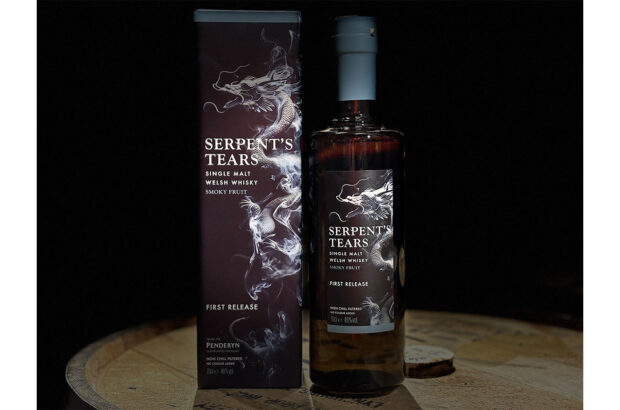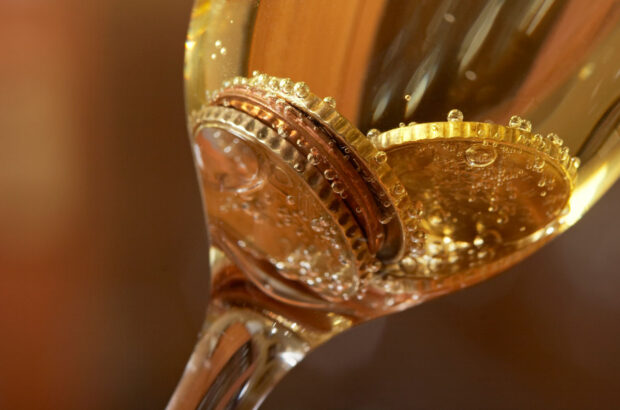Dustin Wilson is wine director for Eleven Madison Park, one of an elite group of restaurants in New York to hold both three Michelin stars, and four stars from the New York Times. He is one of the four sommeliers entering the Master Sommelier Exam featured in the new wine film, Somm.
Since the film wrapped up, you have moved on to assume the role of Wine Director at one of the world’s top restaurants. Describe a day on the job…
Typically, I arrive at the restaurant around 9-10 in the morning, catch up on emails, stock wines, and get ready for the day. Every morning at 11:30 we do ‘line up’ with the service staff before lunch, reviewing new wines, menu items and talk about any issues for service. Lunch service is my time to order wines, make list changes, host vendors for tastings, and handle other administrative tasks, but I like to get out onto the floor to stop by one table or another to say hello and chat about wine. Between lunch and dinner there is a little lull, dinner sommeliers start to arrive, wines are stocked and pulled, and the cellar is organised. Before dinner service we have another half-hour ‘line up’ with the dinner staff, and after opening at 5:30 I am on the floor as much as possible, floating throughout the restaurant. I chat with guests about wine, make sure service flows fluidly, and keep an eye on the restaurant overall. Last seating is at 9:30 – our busiest time – and I step off the floor by 11, wrap up and try to leave by midnight, 5 days a week. I pull myself out of the world during my workweek, but I enjoy it all while I am here.
In the film sommeliers are described as ‘the new rockstars’ by Michael Mina, and one of the stars’ wives even refers to sommeliers as ‘egomaniacs’ – how true are these descriptions?
(laughs). Touchy. The spotlight of the position, the glamour, it can skew people’s opinions of themselves, and there is pressure for sommeliers to look confident, to have a persona, and to be successful – this can play into how sommeliers are perceived. Are we the new rockstars? I don’t know. I just want to do my job, take care of my guests, and try to have a good list. I like to teach the staff about wine. I don’t have a fan club, but if spending hours stocking boxes in the cellar qualifies us as rockstars then maybe we are. There is definitely ego in the business, but there is ego in every business that demands a certain level of expertise.
Why attempt the Master Sommelier Diploma? Was it primarily for personal or professional reasons?
For both. I was inspired by Master Sommeliers around me; I looked up to their work ethic and admired what they had accomplished. The MS is not a golden ticket. At the end of the day it gets your foot in the door for a number of things, but working hard and proving yourself are what will define you in your professional career. I got into wine at a time when I was unsure of what direction I was headed in, and pursuing the diploma gave me structure, pride and discipline.
What, in your opinion, is the most difficult part of the exam process?
The tasting. Theory is about putting in the time; service is about staying calm, confident, and cool; but tasting can always be tough. No matter how much you practice, you can always have a bad day in tasting.
Restaurant guests can be suspicious, or downright distrustful, of the intentions of the sommelier. Is there still a misunderstanding of the profession, and how will ‘SOMM’ affect that?
I hope the film will give credibility to the work behind being a sommelier, even those who are not involved with the Court. We are all studying, tasting all the time, visiting regions. It has taken a long time for the community to shed the snooty, stuck-up ‘somm’ image – maybe people still think we are out to gouge them, but honestly I don’t know a single sommelier that acts that way. If anything, most sommeliers try to educate and expand horizons and turn their guests on to new and interesting things. I understand where the old perception comes from, but I think we are really starting to change long-held ideas on what a sommelier is, and I think the film will continue to impact that.
When Robert Parker lambasted the ‘precious sommelier trying to sell us some teeth enamel-removing wine….made by some sheep farmer’ he was just taking a shot in an ongoing battle. What is the ‘sommelier palate’, and where does it diverge from a critic’s palate?
I am speaking in complete generalities, as there are many critics and they all focus on different things, but the consensus around ‘American wine critics’ at the well known publications is that they like wines focusing on power and richness – wines that impress – whereas the sommelier prefers wines of acidity, structure, elegance and finesse. Put yourself in each person’s shoes: critics taste wines without food, whereas sommeliers recommend wines to guests who are dining in their restaurants. Bigger and more powerful wines don’t always go with more delicate cuisine.
Selling food and wine advice has become a cottage industry, with innumerable books on the subject. How much of this is subjective, and how important are the ‘rules’?
There are plenty of subjective things in food and wine pairing, and no hard and fast rules, per se – plenty of reds work with fish, for instance—but there are a few useful guidelines. For me, acidity always plays a key role. It cuts through rich and fatty dishes, and balances tart dishes as well. I look for mouthfeel of the wine to match texture of the dish, and aromatic profiles in wine that work with certain foods. Grüner often smells like white pepper, radish and parsnips, and so it really works with salads that contain the same. Chablis is chalky and briny, and smells like seashells; it works well with oysters and caviar. But I love to play around with it. Sometimes things work when you least expect it.
What is your opinion on the 100 point system?
I think it had a use, and it helped a lot of people get into wine. Buying wine was a little easier and more straightforward for people without a lot of experience. But it has negative consequences: it has homogenised the American palate, and people have relinquished their own decision-making abilities and personal preferences in favor of someone else’s. Most of these 100 point wines taste the same, or at least have a very similar profile. People start to just look for wines that taste just like that 100 point wine instead of appreciating wines for what they are because they have been convinced that this is what great wine tastes like.
Oversimplification is not as necessary now as Americans continue to evolve their palates and educate themselves. Imagine if other luxury goods—suits, shirts—had a rating system like this. If all shirts rated 100 looked the same, fashion would be dull. But not everyone is a wine geek, and not everyone wants or needs a soil lecture to make drinking decisions, so maybe the point system has its place. But I don’t have to like it.
What are your favorite American wines to serve to fellow sommeliers?
Right now, I enjoy what’s happening in California with Pinot Noir and Chardonnay. New wave producers are focusing on nuanced, balanced styles. Big, juicy, over-the-top styles of Pinot Noir are settling down into more elegant wines. Syrah is potentially delicious, especially those from Gramercy Cellars in Walla Walla and certain producers in California. I like what Wells Guthrie at Copain is doing with Pinot Noir and Syrah, Arnot Roberts is great, and Eric Railsback and Justin Willett at Lieu Dit are doing cool things with Loire grape varieties in Santa Barbara.
Tell us about your own winemaking project, Vallin, with one of the film’s other stars, Brian McClintic…
‘Vallin’ is the name of the street where Domaine Jamet is located in Côte-Rôtie. Rhône varieties from Santa Barbara: Syrah, Viognier, a Grenache-based blend, a little rosé, some Marsanne-Roussanne. 2012 is the first vintage, and our rosés and whites should be out sometime in the spring. I am super-excited!
Who do you admire most in the wine world?
Personally, Bobby Stuckey MS (owner of Frasca Food and Wine in Boulder, CO –ed.) is the man! He gave me my start, gave me great guidance, and was my mentor. He sets his own high standards – personally and professionally, he keeps up with his knowledge and tasting, owns a great restaurant, takes great care of his guests, and is on the floor every night. Super humble in light of his successes.
Do you use screwcap wines in your restaurant?
Yes.They are fine. Service is easy. It loses the romance of a cork, but has great functionality.
Readers can probably guess your answer, but: Bordeaux or Burgundy?
Burgundy. Not a Cabernet drinker.
Dustin Wilson biography:
Dustin was born and raised just outside of Baltimore, MD. His interest in wine began as a server in a high-end steakhouse in Baltimore while working to pay for college. After graduating with a Geography degree, he decided to take time to pursue wine and skiing. This lead him to Boulder, CO where he took a job as a food runner and back waiter at Frasca Food and Wine to study wine under the venerable Bobby Stuckey, MS and have access to some of the best skiing in North America.
Over his three years at Frasca, his role evolved to sommelier and eventually wine-buyer. In 2008 he left Boulder to go to Aspen as sommelier at the Grand Award winning 5 Star/5 Diamond restaurant Montagna at The Little Nell hotel. While there, he continued to develop and hone his skills. While at The Nell, he was recognised as one of America’s Best New Sommeliers in Wine and Spirits Magazine.
In the fall of 2010, he relocated to San Francisco so he could take a position under the direction of Rajat Parr at the Burgundy heavy restaurant RN74. With several years of training with the best in the business under his belt, in the fall of 2011 he and his wife Rachael and their dog Max moved back east to New York as Dustin took the position of Wine Director for Eleven Madison Park, one of an elite group of restaurants in New York to receive both 3-Michelin Stars and 4-Stars from the New York Times.
Written by Matt Stamp







